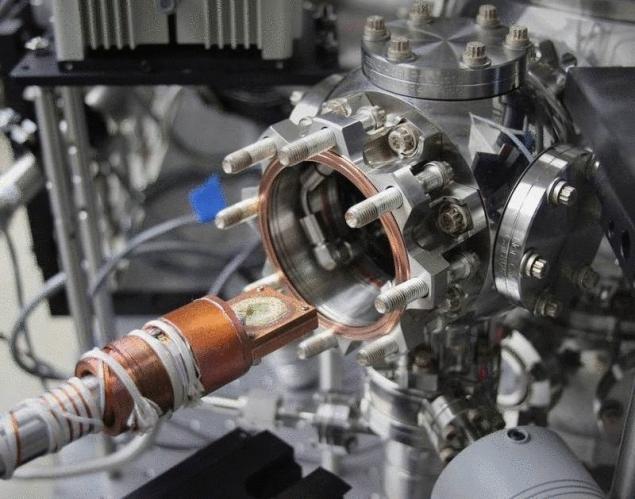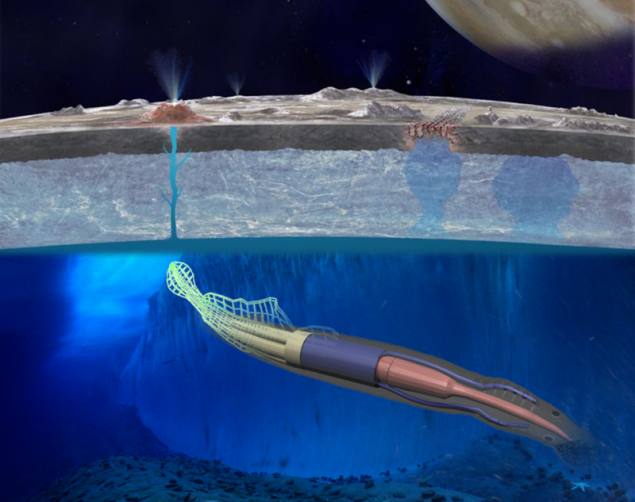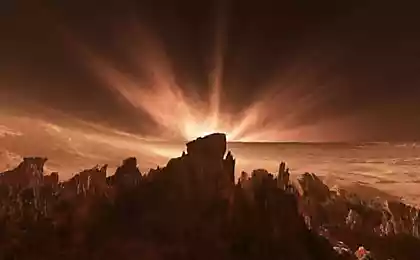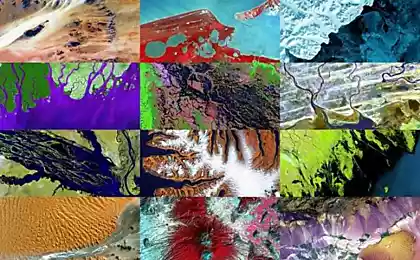466
Dark material in crevices on the surface of Europa can be sea salt

For more than ten years, scientists interested in long fissures on the surface of Arctic Europe and its dark color which they contain, as well as other relatively young geological features, is also covered with a mysterious dark material. Now scientists have come to explain that not only provides answer, but suggests that underground ocean of the moon can interact with the surface: dark material, sea salt. Once these salty oceans can be explored by a probe in the form of a squid.
"If it's just salt from the ocean below, then answer the question, what is this dark material is simple and elegant," says the lead scientist of the project, Kevin Hand, a planetary scientist from the jet propulsion Laboratory of NASA in Pasadena.
Other studies suggest that Europa's ocean may be salty like earth's oceans. And, as on Earth, he may come in contact with a rocky subsoil, which can provide the mineral nutrients needed for possible life forms. Water reaching the surface through cracks or possible eruption, can also bring this salt to the surface, leaving hints at the possibility of habitable life in the depths.

"We have a lot of questions about Europe, the most important and difficult of which involves the presence or absence of life. Studies like this are important because focus on the questions that we can answer, like inhabited Europe or not — says Kurt Niebuhr scholar program, Outer Planets Program in the headquarters of NASA in Washington. — Once we answer these questions, we will be able to think about a possible life in the ocean under the icy crust of Europe."
The new study was accepted for publication in the journal Geophysical Research Letters.
Previous studies that use data from the Galileo spacecraft, suggest that the dark color of the cracks because sulphur and magnesium containing compounds. These compounds should be subjected to the harsh radiation of the magnetic field of Jupiter. New experiments, however, indicate that these compounds can explain only the colors of the older sections of the affected area; sea salt could better explain the color more of young regions.
To test this, Hand and his colleague Robert Carlson created an imitation of the surface area of Europe in their lab. They tested different types of materials and collected spectra for each kind of fingerprint.
As explained by the Hand, "we call it Europe-in-a-can. The laboratory setup simulates conditions on the surface of Europa from the point of view of temperature, pressure and exposure to radiation. Spectra of these materials can be compared with those collected by spacecraft and telescopes."
In these tests they used samples of common salt (sodium chloride) and a mixture of other salts and water. The vacuum chamber has recreated the frozen surface of Europa at a temperature of -173 degrees. The electron beam is simulated intense radiation falling on the surface. Samples that started in the white color gradually become the dark yellow-brown like material on the surface of Europa. The analysis of the spectra showed a strong similarity in colors with faults on the surface of Europa. The longer the samples were exposed to radiation, the darker they became, similar to that seen in Europe. These changes in color and the dark color should help scientists to determine how old the surface features of the moon.

"This work tells us that the chemical signature heated by radiation of sodium chloride convincingly fits the data about the mysterious material of Europe," Hand said.
A more detailed analysis will probably have to wait until after the mission to Europe like the Europa Clipper, which is only available on paper. This concept includes several flybys around the moon, which will allow you to learn more about its surface, the depths of the ocean and of potential life. Possible lander proposed as part of the mission, he could explore the dark material on the surface of the satellite. However, even this mission will allow you to learn about the dark material bigger than any telescope on Earth.
There is another, more ambitious project of mission: NASA has just selected 15 proposals for study under phase I of the program of advanced innovative concepts (NIAC), and one such proposal includes "a robotic squid" or water Rover, which could use the underground ocean of Europa or other moons like Enceladus.

From the press release:
"One of the proposals selected offers the use of soft robotic Rover missions that could not be implemented using traditional power systems. This Rover like an eel with a short antenna on the back which absorbs energy from a locally changing magnetic fields. The goal of the project is to provide a study of the moons of gas giants like Europe with amphibians".
Parts of the robot like tentacles will act as an electrodynamic energy storage, collecting it in a locally changing magnetic fields of the ocean.
The ability to explore an alien ocean in place should be one of the most incredible space missions at all times. You can use it will directly take samples and analyze the water, including, of course, search for possible manifestations of life — even microscopic. The ocean to explore and in the distance, with the help of the spacecraft, but there is nothing better than being out in the ocean, swim like the local fish and watching it so close for the first time in history.published
P. S. And remember, only by changing their consumption — together we change the world! ©
Source: hi-news.ru























